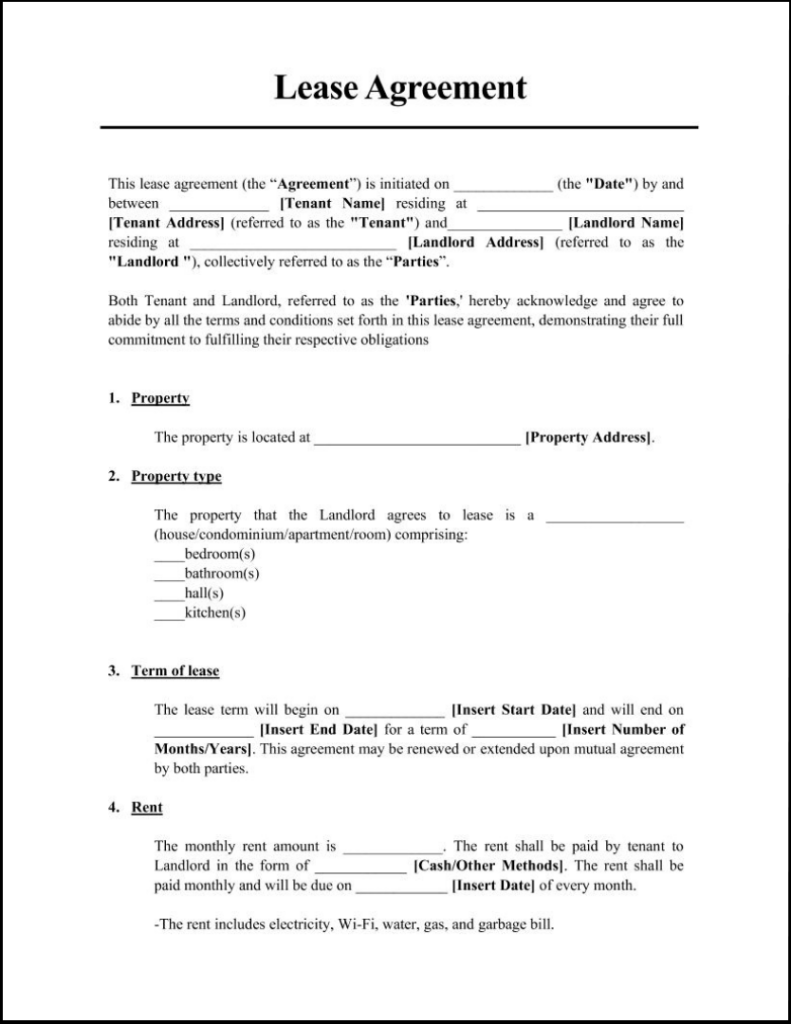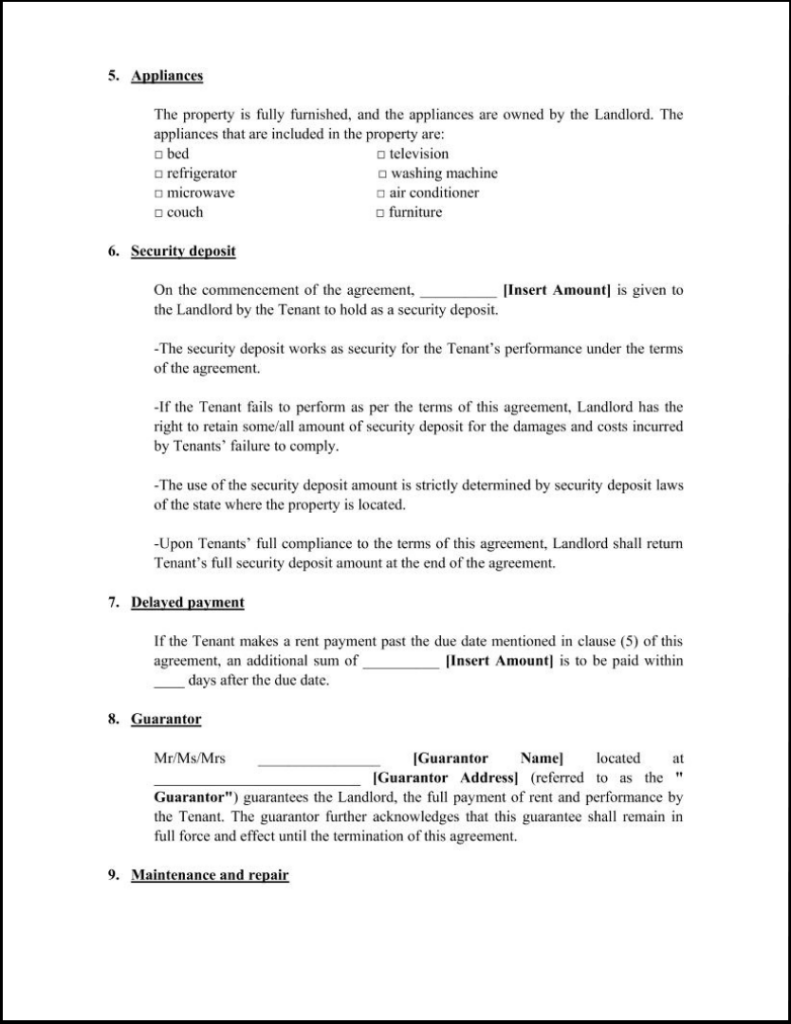Lease Agreement Template
Leasing a property can be a complex process for both landlords and tenants. It requires a clear understanding of the rights, responsibilities, and obligations of each party involved. To ensure a smooth and transparent leasing experience, a well-drafted lease agreement is essential.
Kickstart your leasing process today with our meticulously designed lease agreement template. Simplify your operations and ensure a seamless leasing experience by downloading it now.
What is a Lease Agreement?
A lease agreement is a legally binding document that outlines the terms and conditions of a rental arrangement between a landlord and a tenant. It establishes a contractual relationship, specifying the rights and obligations of each party during the lease term. A well-drafted lease agreement serves as a vital tool for both landlords and tenants to protect their interests and maintain a harmonious landlord-tenant relationship.
Lease agreements typically cover important aspects such as:
- Parties Involved
- Property Description
- Lease Term
- Rent and Payment Terms
- Security Deposit
- Maintenance and Repair
- Utilities and Services
- Use and Restrictions
- Entry and Inspection
- Termination and Renewal
Free Editable Lease Agreement Sample
Access our free lease agreement sample to safeguard your interests. Download now and take proactive steps toward a secure lease agreement at no cost.
Why a Lease Agreement is Essential for Rental Arrangements?
A lease agreement plays a crucial role in rental arrangements, providing a comprehensive and legally binding contract that outlines the rights and responsibilities of both landlords and tenants. This essential document helps establish clear expectations, protect the interests of all parties involved, and mitigate potential conflicts. Let’s explore why a lease agreement is essential for successful rental arrangements.
Risk of Verbal Lease Agreements
Verbal lease agreements, although common in some situations, can be risky for both landlords and tenants. Without a written lease agreement, important terms and conditions may be subject to misinterpretation or forgotten altogether. A written lease agreement ensures that both parties are on the same page and minimizes misunderstandings that can lead to disputes or legal complications.
Rent Control
In some jurisdictions, lease agreements offer protection against unreasonable rent increases through rent control regulations. These regulations limit the amount and frequency of rent adjustments, providing stability and affordability for tenants, especially in areas with high rental demand and the potential for significant rent hikes. A lease agreement can outline the agreed-upon rent and any applicable rent control provisions, ensuring transparency and fairness in rental pricing.
Conflict Resolution
Disputes can arise in any landlord-tenant relationship. A lease agreement serves as a valuable tool for conflict resolution by clearly defining the process for handling disagreements. It can outline steps such as mediation or arbitration, helping both parties navigate disputes and find mutually satisfactory resolutions, ultimately fostering a more harmonious rental experience.
Repairs and Maintenance
Proper maintenance and repairs are essential for maintaining a habitable and safe rental property. A lease agreement specifies the responsibilities of both the landlord and the tenant regarding repairs and maintenance. It clarifies which party is responsible for specific tasks and sets expectations for prompt communication and resolution of maintenance issues, ensuring a well-maintained property and a comfortable living environment.
Legal Protection
A well-drafted lease agreement provides legal protection for both landlords and tenants. It outlines the rights and obligations of each party, ensuring compliance with local laws and regulations. Additionally, it helps protect the landlord’s property by clearly stating rules related to property use, pet policies, subleasing, and other important considerations. For tenants, a lease agreement guarantees their right to privacy, quiet enjoyment, and protection against unfair eviction.
Ending a Lease Agreement Prematurely
Sometimes, circumstances may arise that require either the landlord or the tenant to end a lease agreement prematurely. While lease agreements are typically designed to last for a specified term, certain situations may warrant early termination. Here are some circumstances that may lead to the premature ending of a lease agreement:
- Relocation for job purposes
- Family emergencies or health issues
- Unforeseen financial difficulties
- Property damage or safety concerns
FAQs Related to Lease Agreement Templates
Disclaimer: Please note that the samples provided here are intended to serve as a helpful resource and should not be considered legal advice. It is important to consult with a qualified attorney or legal professional to ensure that any modifications or usage of these templates align with the specific laws and regulations applicable to your jurisdiction and circumstances. BunnyDoc disclaims any liability or responsibility for the consequences arising from the use or customization of these templates. It is the responsibility of the users to review and adapt these templates to their specific needs, and to seek legal counsel for their particular circumstances.



